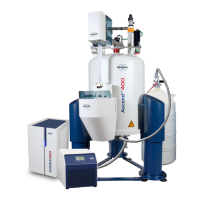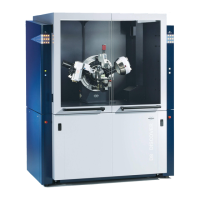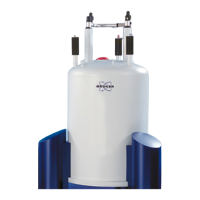Introductory Theory and Terminology
H171804E_14_001 13 / 86
3.2 Reference Compounds, Hertz, ppm
It has already been stated that NMR signals are analyzed with respect to two characteristics,
intensity and frequency. Absolute frequencies are measured in Hertz (Hz - cycles per
second) or Megahertz (MHz). Reporting on measured signals is simplified if all frequency
measurements are made with respect to a reference. For
1
H NMR the recommended
reference is a chemical called tetramethylsilane (TMS). When a
1
H or a
13
C spectrum is
acquired the presence of TMS gives rise to a single, easily identifiable peak. This peak is
referenced to zero and the frequencies of all other peaks are given in terms of their frequency
relative to the TMS frequency. Thus, we can talk of a signal being 2.5 kHz above the TMS
peak. This is preferable to quoting the absolute frequency of the signal which might look like
500.1325 MHz.
Referencing signals to the TMS peak clearly cuts down the number of digits needed to
describe the frequency of a signal. However, this can be even more simplified if the ppm unit
is used instead of Hertz. The ppm unit represents frequencies as a fraction of the absolute
resonance frequency which will depend on the strength of the magnet. The advantage of the
ppm unit is that frequency measurements are independent of magnet strength. This greatly
simplifies the comparison of spectra acquired on different spectrometers.
The conversion factors to be used when changing from Hertz to ppm and vice versa are
shown in the diagram below.
Figure3.5: Converting Hertz and ppm
1 Hertz 3 ppm
2 Divide by the carrier frequency
(SFO1) in MHz
4 Multiply by the carrier frequency
(SFO1) in MHz
The advantages of using the ppm unit are best illustrated with a practical example.
Suppose a
1
H signal was observed at 2.5 kHz above TMS using a carrier frequency (SF01) of
500 MHz. The frequency of any emitted NMR signal is directly proportional to the strength of
the magnet. The same signal would appear at 3.0 kHz above TMS on a 600 MHz
spectrometer and at 2.0 kHz above TMS on a 400 MHz machine. A single conversion may
not be a great inconvenience but it must be done for every peak for each system. Now
consider the same signal but quoted in the ppm unit.
Frequency in Hertz divided by SFO1 = Frequency in ppm
Examples:
2500 Hz / 500 MHz = 5 ppm
3000 Hz / 600 MHz = 5 ppm
2000 Hz / 400 MHz = 5 ppm
The
1
H signal may now be described as being located at 5 ppm above, (i.e. downfield from)
the TMS peak regardless of the spectrometer frequency.

